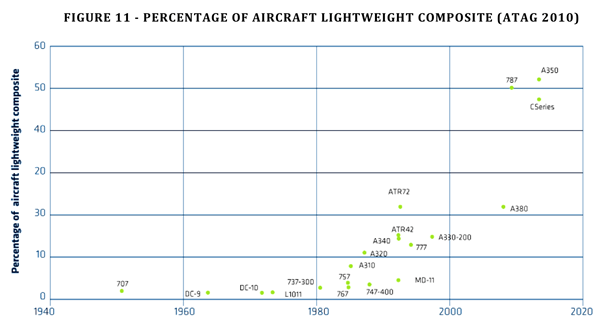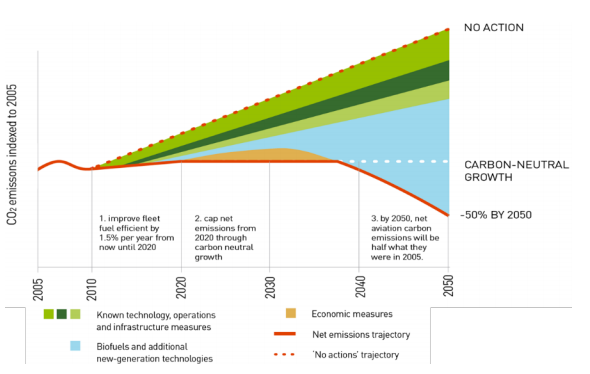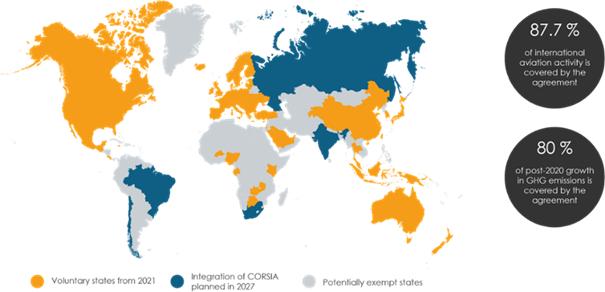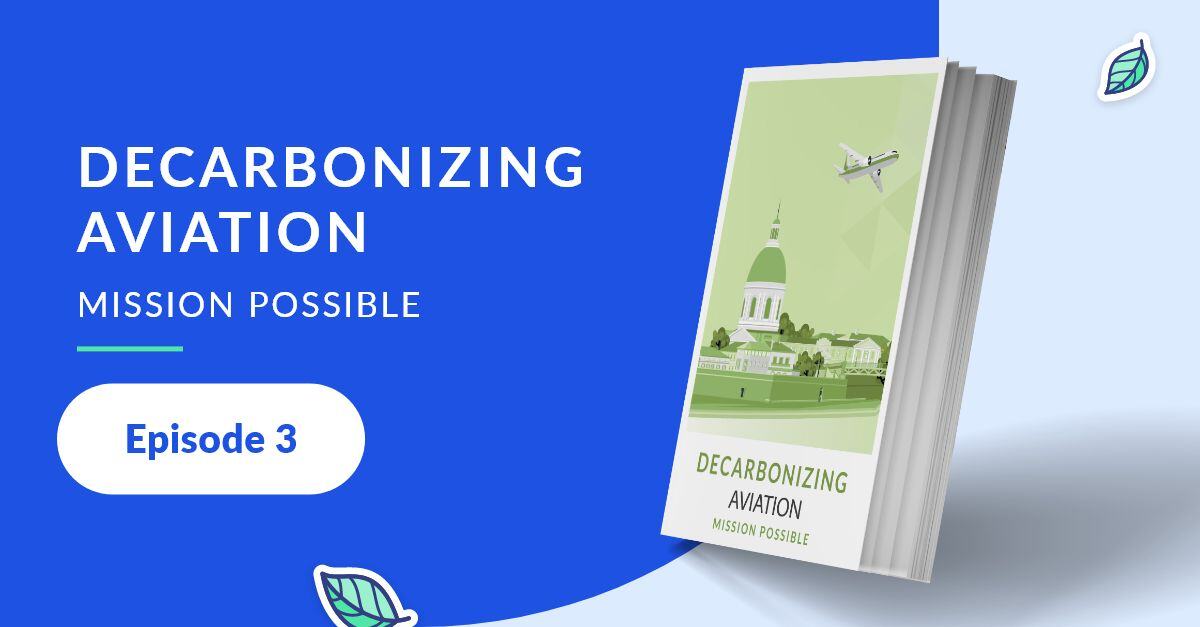[Decarbonizing Aviation] Episode 3: Aviation track record and roadmap
If you want to learn more about the opportunities and challenges of aviation decarbonization, you've come to the right place!
|
This mini-series of small articles will present you successively:
In this third article, we take a look back at aviation's track-record, its decades-long effort to reduce its footprint, and its roadmap for the future. |
Aviation track record
The aviation track record of reducing fuel consumption and emissions is remarkable, and this focus on fuel efficiency is nothing but recent.
Is it surprising considering that emission reduction is a "relatively new" subject? Well, not really because fuel consumption and emissions are directly related (the combustion of jet fuel being complete, each kg of burnt fuel emits 3.15kg of CO2).
Fuel has always been on the mind of airplane manufacturers and airlines because:
- Fuel consumption impacts the range: the less an aircraft burns, the further it can fly non stop.
- Fuel is usually the #1 operating cost in an airline and represents between 20% to 40% of all operational costs, depending on the price of crude oil and the airline's business model.
For these reasons, even when crude oil was cheap, reducing aircraft fuel consumption has always been an obsession. The following figure shows the progress in jet fuel efficiency from 1960 to 2010: in 50 years, engine fuel consumption has decreased by -49% and aircraft fuel burn per seat by -82%.

Sources: IPCC Report 1999: Aviation and the Global Atmosphere – ATAG 2050 >> / aviationbenefits.org >>
And this trend of progress has not stopped. Besides having new engines, the new generation aircraft (A220, A320 Neo, A350, B737Max and B787) are also making progress on weight reduction with more electrical systems and lightweight composites as carbon fiber.

Which industry can claim such progress? Not many probably.
To go back to our Fiat 500 vs. modern aircraft comparison that we used in Episode 1: How much CO2 does aviation emit, and how it compares with other sectors?, the Fiat 500 from 1957 burned 4.5 liters / 100 km, and the new one from 2007 burns from 3.8 to 6.7 liters / 100 km. No real progress. Besides, individual cars' actual seat occupancy has kept decreasing while aircraft load factors have kept increasing.

By comparison, in 50 years, the Fiat 500 fuel consumption has made no or little progress.
Industry roadmap
Now, is this technical progress enough to compensate for air traffic growth? No, because the math of growth is terrible. So what is the industry roadmap to reduce its carbon footprint?
The airline industry has committed to cap net emissions from 2020 through carbon-neutral growth and to reduce net aviation carbon emissions by half by 2050 compared to what they were in 2005.

A mix of solution
The plan to reach this objective is to leverage a mix of solutions:
- Improve (known) technology
- Improve operations
- Improve infrastructures
- Use economic measures
- Introduce new-generation technologies and biofuels
The largest potential comes from new-generation technologies (such as electricity or hydrogen), which will be the focus of our next four episodes. But we cannot expect that they are widely available and have an impact before ~2035.
The same goes for biofuels: even though there are good prospects and existing experiments with sustainable aviation fuels (a topic we'll address in Episode 8: Sustainable aviation fuels), creating an industrial and logistical chain that scales up to the airlines' demand will take years.
Meanwhile, continuous improvements such as the ones we have witnessed in the past (~1.5% fleet improvement per year) are possible with newer generation aircraft and fleet renewal.
There is also considerable progress than can be done in operations and infrastructure (Air Traffic Management and airports). The fuel-saving potential is estimated at ~10% for each field or 20% combined (a topic we'll address in Episode 9: Operational and ATM improvements).
The industry needs one extra lever called market-based or economic measures to reach carbon-neutral growth from 2020 on. They consist of schemes such as the European Emission Trading Scheme (EU ETS) or the Carbon Offsetting and Reduction Scheme for International Aviation (CORSIA).
The principle behind these schemes is the following: "If you must reduce your CO2 emissions by X, but you can't do it by yourself, why can't you pay someone else to reduce theirs by X? This would give the same benefit for the planet".
It consists of a market where organizations that can reduce CO2 emissions (e.g., by planting trees or by replacing an inefficient carbon-intensive factory with a modern carbon-neutral one) sell carbon offset to other organizations that cannot.
The European trading scheme was introduced back in 2005 and extended to aviation in 2012. It covers all European routes.
CORSIA is the new international scheme adopted by ICAO (The International Civil Aviation Organization, a United Nations specialized agency) following the Paris agreement. It focuses only on international routes.
In short, CORSIA defines a baseline calculated from the 2019 and 2020 emissions, and all emissions over this baseline will have to be offset when CORSIA's offsetting stage starts (in 2024 for 73 voluntary states and 2027 for all other countries).

To know everything about CORSIA, download our dedicated white paper >>
Can we believe in this industry commitment?
-
The airline industry has set for itself a very aggressive goal in terms of CO2 reduction, and we have to pay respect for this.
Now can it be up to the challenge?
- Its track record, as we saw before, gives credit to the assumptions for continuous technology improvements.
- The goals set for operational and infrastructure improvement also seem realistic and within reach, as we'll see in Episode 9.
- Market-based measures have been put in place eight years ago for Europe and are being implemented now at the international level.
There remains one challenge: what can we expect from new-generation technologies and biofuels? That will be the focus of our next five episodes.
What's up in the next episode?
The next episode of this series is entitled "The challenges of alternative sources of energy."
It will address the following topics:
- An aircraft requires (a lot of) power
- Kerosene has all the right properties (except it's fossil)
- The challenge of mass density and volume density
WANT TO LEARN MORE?
Discover how airlines use data to improve fuel efficiency for Net-Zero emissions goal >> Read the article



